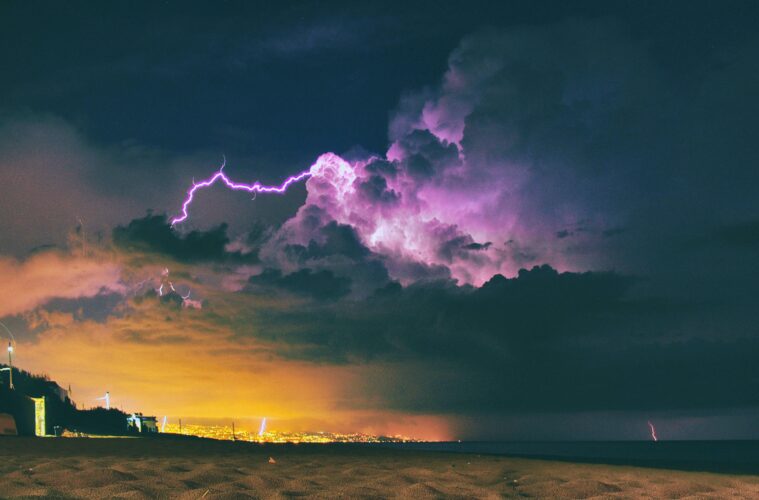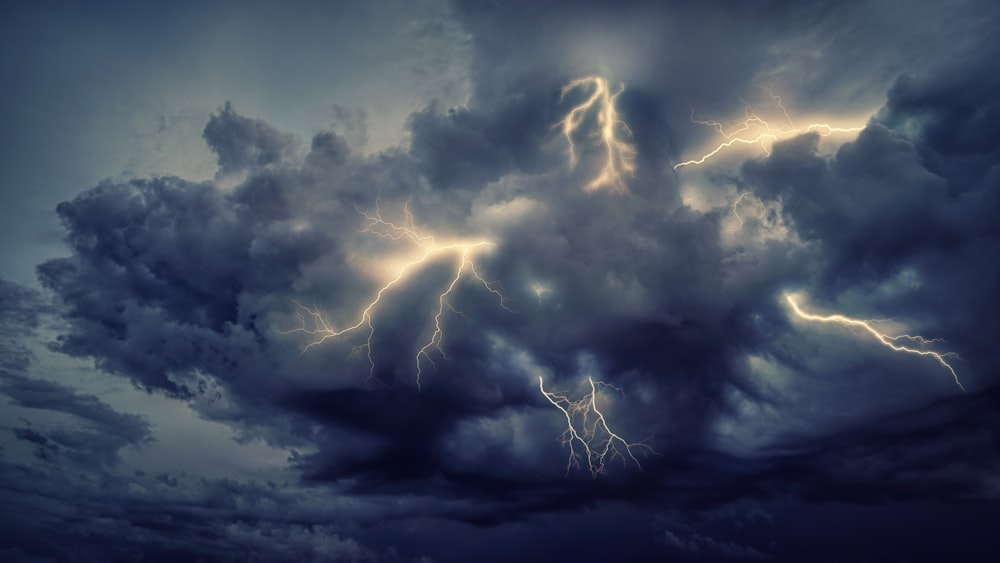The upheaval does not end when a big storm hits land; in fact, it is only getting started. After the storm has passed, it is an important step that is sometimes skipped, but it is necessary to pick up the parts that have been scattered around while ensuring that one’s personal safety is not compromised. After the storm, things need to be put back together again, and this is a part of that process.
These large storms have a propensity to create a domino effect, which results in hazardous situations that you need to be aware of and stay away from if at all possible. This is the case even in the event that a severe storm passes through your area without causing any physical damage to your property.
You and your family can minimize the risk of being hurt or killed as a result of a storm’s secondary effects by taking a number of precautionary actions. These precautions can be taken in a variety of different ways. If you and everyone in your family, together with your friends and neighbours, adhere to these steps in the aftermath of a storm, you will be able to maintain your safety.
Avoid Standing Water
Heavy rainfall often results in flooding, and many different kinds of storms have the potential to pull down powerlines. This can result in the production of electrical currents that move through the ground and any water that is standing. In the aftermath of a storm, it is vital that you stay away from downed powerlines and any standing water at all times. You should also avoid walking through any standing water. This means staying away from the water whenever possible, whether you are driving, strolling, or wading.
Whether or not a powerline is in direct contact with a puddle or larger body of standing water, an electric current may still generate enough power to electrocute anything or anybody that even touches water. This is true whether or not the powerline is touching the water itself.
The puddles in the middle of the road nevertheless conceal a secret, despite the fact that it is mathematically impossible for an electric current to be generated there. You just never know what may be hiding in the shadows down there. It is common for large sinkholes to be camouflaged as smaller puddles; nevertheless, the results of driving over them might be catastrophic for your safety.
It has also been observed that the puddles contain bacteria as well as sharp objects, both of which have the potential to cause a person’s health to suffer in the long run. You should make every effort to avoid walking over any standing water and should avoid it at all costs!
Stop the Gas Supply by Turning Off the Pipes
Turn off the main gas valve in your home as soon as possible if you detect the odour of gas or have any cause to believe that a leak may be occurring. If you have cause to believe that the electricity will go out during the storm and you do not require the use of any gas, it is preferable to switch it off before you leave if you are going to evacuate or if you have reason to suspect that the electricity will go out during the storm.
If a gas line were to rupture inside of your home, which is a risk that should not be taken lightly, your property might become quite unsafe. It is possible that it will cause your home to catch fire, which you will then be exposed to, or it may cause your home to become contaminated with a deadly gas, which you will then inhale. Both of these outcomes are plausible.
Be aware of the presence of carbon monoxide gas.
The usage of generators is associated with a variety of dangers, one of which is the possibility of carbon monoxide entering a home. This risk is commonly neglected to be considered. When carbon monoxide is present, it forces oxygen out of the system, replacing it with a poisonous gas that has the potential to be fatal. It is imperative that you always run your generators outside, at a safe distance from any openings such as windows, doors, or vents. This is one of the most important safety precautions you can take.
If you are going to be using a generator, one more safety measure that you should take is to install a carbon monoxide detector inside the room in your house that is the closest to the generator. This will help protect you and your family from the dangers of exposure to this potentially deadly gas. It will detect any carbon dioxide that enters your home inadvertently and warn you of the potential threat it poses before the situation escalates to a more serious level.
In the aftermath of the storm, if your neighbour is using a generator, you need to keep a close eye on it to make sure that it is not operating too near to your house. This is especially important if you have small children. After the hurricane, you should not have any problem staying safe provided that you pay attention to what is going on around you and take appropriate precautions.
Consume only water that is purchased in bottles.
If a severe storm causes havoc in your town or any of the towns that are next to it, one of the first things that will occur is that the power will be cut off. Because of the amount of energy required to run the filtration system that purifies the drinking water for the entire city as well as the pipelines that transport that water into your home, it is not safe to ingest, clean with, or cook with water that comes directly from the tap.
Avoid hazardous debris
All debris that is left behind by a storm has the potential to be hazardous; as a result, it is in the best interest of everyone to avoid coming into contact with it under any circumstances. The word “debris” can apply to a large number of different things, some of which include fallen trees, roofing tiles, window glass, and a great many other things. Debris is generally full of items that are hazardous to one’s health, such as rusty nails, sharp edges, and other potentially dangerous objects.
Even while, at first glance, debris might not appear to pose any kind of hazard, it is still best to avoid coming into touch with it just in case it does. It is in your best interest to avoid injuring yourself, especially when you consider the fact that the emergency rooms at hospitals and urgent care facilities can get quite crowded, and that normal doctor’s offices might not even be open.
Until the authorities inform you it is safe to go back inside your home, you should wait outside of it.
Whether or not you were had to evacuate your home due of the storm, there is no question that you are eager to return to it in order to determine whether or not it sustained any damage so that you may resume your usual life. Unfortunately, returning back home is not a straightforward undertaking, and there is no assurance that doing so would be risk-free. There is also no guarantee that going back home would be safe.
Make sure you check with the local news outlets to get up-to-date information on the most recent evacuation instructions and to find out when it is safe to go back into the region. It is in the best interest of everyone to remain put until everything has been cleaned up, particularly if the neighbourhood has been destroyed and the lights is still out or if there are potentially dangerous circumstances that linger after the cleanup has been completed.
Ensure the well-being of everyone else by taking the precautions that are required of you.
If you have continued to live in your home despite it having sustained damage, such as a broken window or a leaky roof, it is possible that you will need to make repairs to your property to the best of your ability in order to avoid the damage from becoming even more severe. Be sure to keep your receipts after making any necessary purchases, whether it be goods from the shop or hiring a professional to do repairs and sort out the window repair so that you can submit them together with your storm claim for your homeowner’s insurance. If you do not have your receipts, you will not be able to file a claim for your homeowner’s insurance. Keep in mind that you should always use extreme caution.
Published by HOLR Magazine



